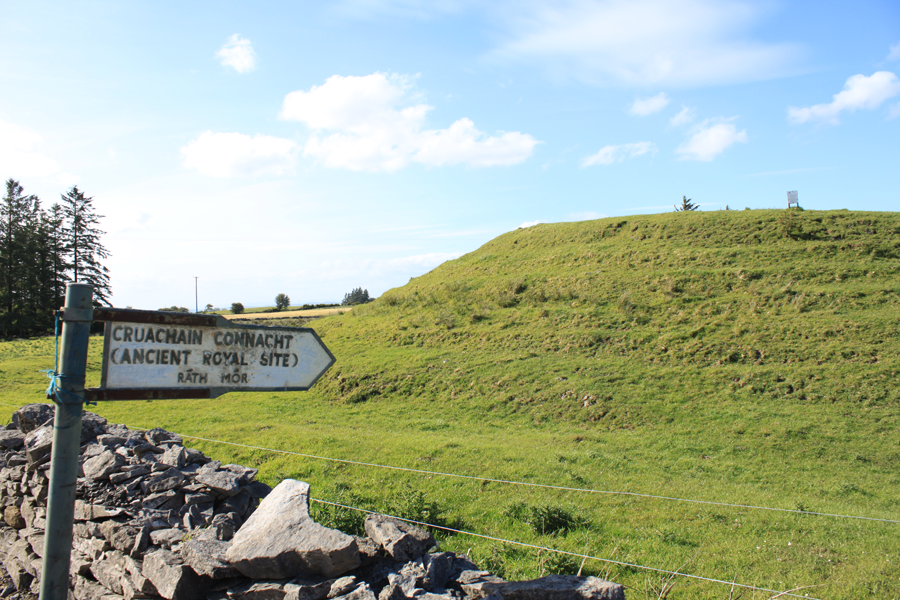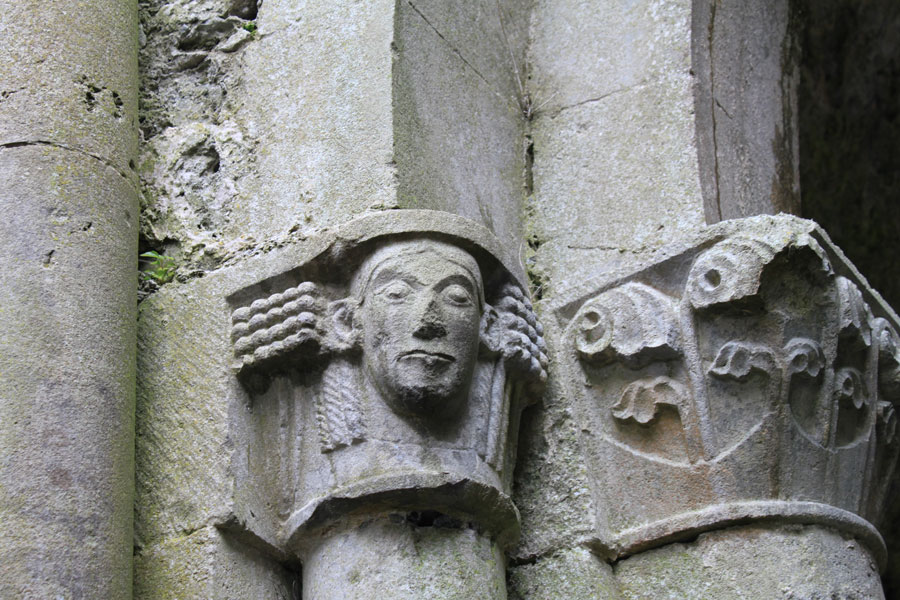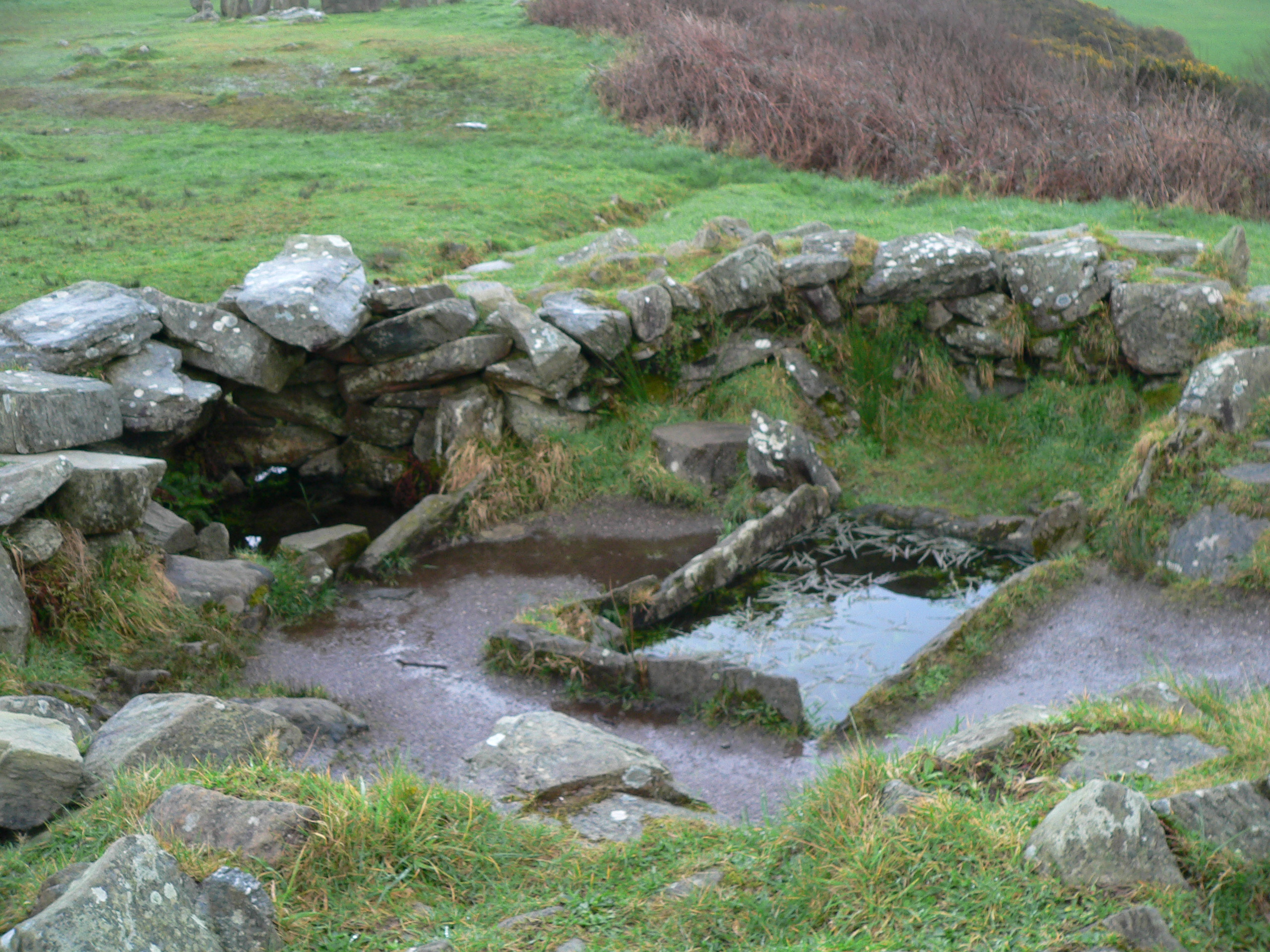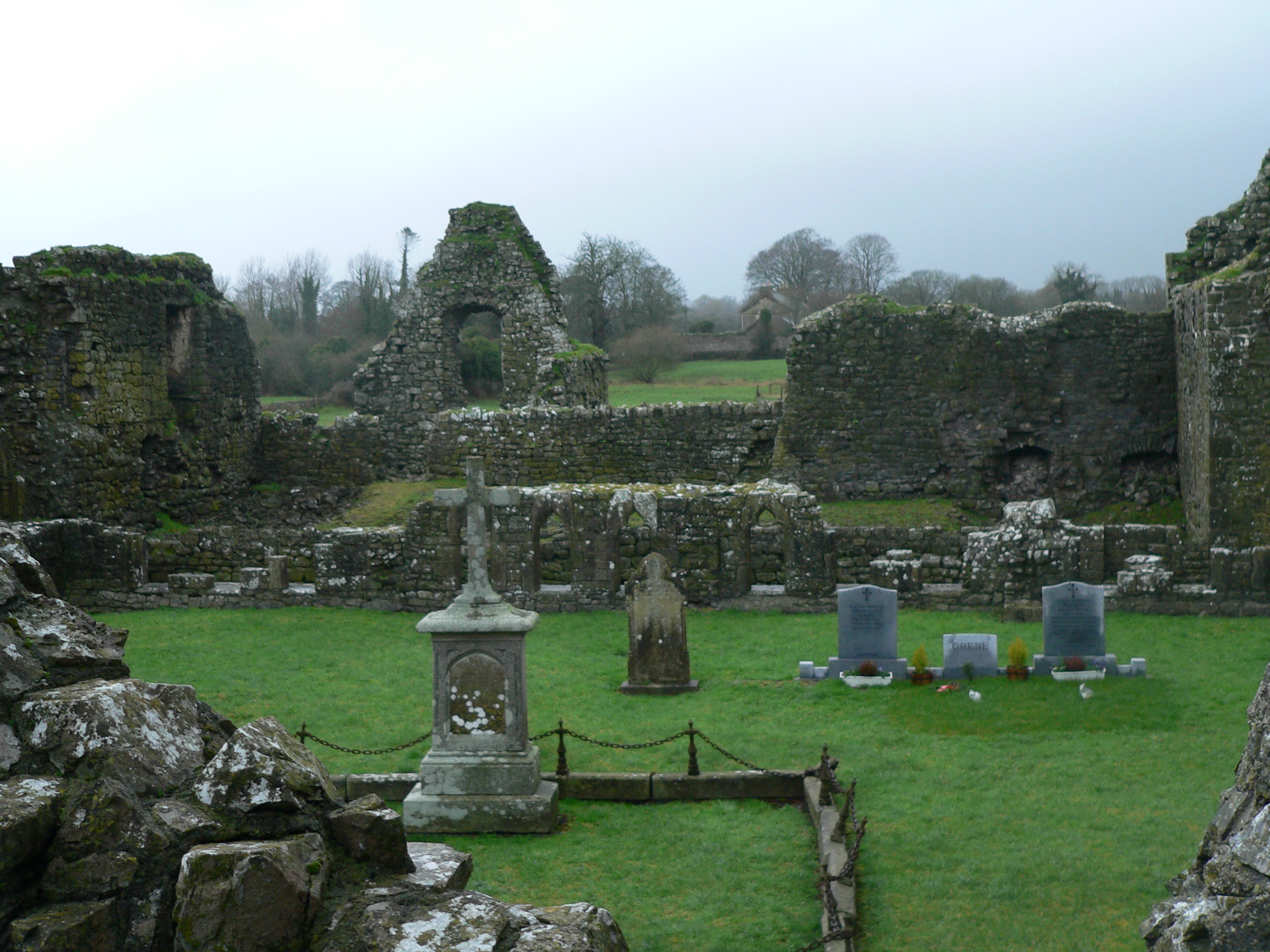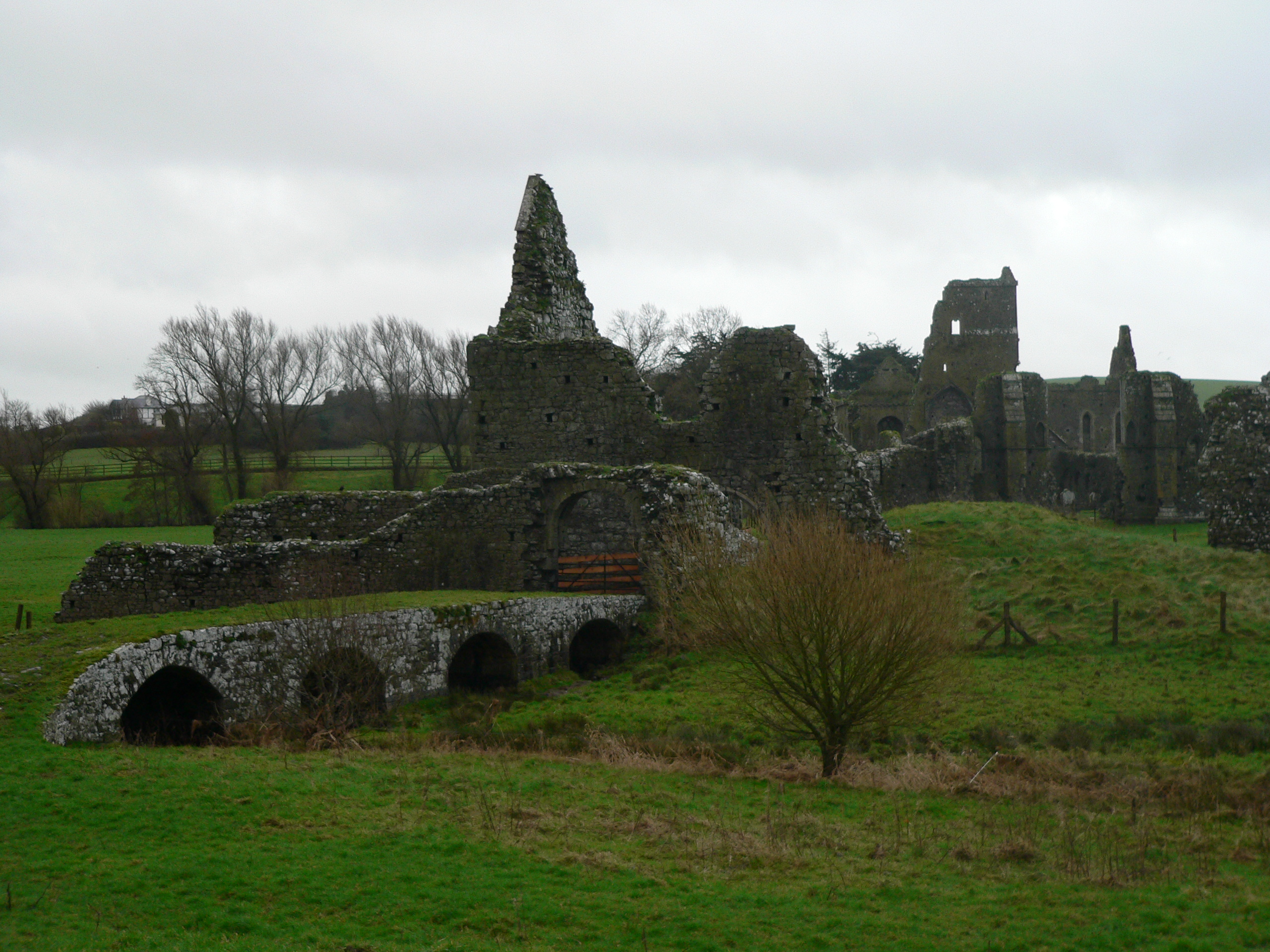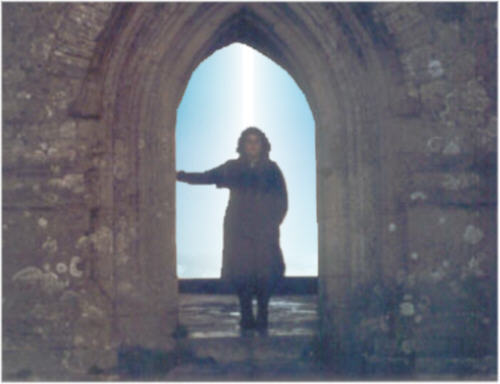Rathcroghan – Royal Site in Tulsk – County Roscommon
Guest blogger for this post is Mike Croghan, owner of Rathcroghan Tours. He’s from Bellanagare in County Roscommon. Mike is an artist as well as a guide will be leading our group through the Rathcroghan sites on day 6 of the Thin Places 2012 tour.
A Croghan on Rathcroghan
I’m the luckiest man in the world – I really am, I’m a Croghan and I live on Rathcroghan.
To those who may not have heard of Rathcroghan (that would be 99.9% ), it is one of Ireland’s greatest hidden gems, a landscape that is both physical and mystical, the Tara of the west, home to the goddess Medb, the epicenter for Celtic spirituality……and more.
I clearly remember sitting at the window looking over at a nearby hill whilst eating my dinner – I was 7 years old. What had my attention was a ring fort on the hill top, I can remember wondering what it was before turning my attention back to the spuds.
 Approaching one of the Rathcroghan mounds.
Approaching one of the Rathcroghan mounds.
Over 40 years later I still wonder about that ring fort, what was it used for, why was it placed there, who lived there; my problem is that I am asking the same question about the other 140 monuments on Rathcroghan and it has taken over my life. You see Rathcroghan has the highest density of earthworks in Europe and they sit on the landscape, untouched in their original state teasing me with their enigmatic presence.
The monuments are wrapped in myths and legends, some are named after long dead kings or heroes, others hold the secrets to the otherworld, more have names associated with ancient tales and stories.
For the archaeologist Rathcroghan is a gold mine of monuments dating from as far back as the Neolithic period all the way through the bronze age, iron age, right through the medieval periods to today, so many different styles of monument – raths, cairns, barrows, ring forts, ceremonial mounds, caves and standing stones.
If you approach Rathcroghan as a spiritual pilgrim looking for a connection then you have hit the mother load. The integrity of this landscape has remained intact over the millennia as have the energies within the land. In fact the area only really makes sense when viewed as a ritual landscape.
 View from one of the Rathcroghan mounds
View from one of the Rathcroghan mounds
While other Celtic capitals hit the headlines and receive thousands of visitors each year Rathcroghan sits and waits for the inquisitive pilgrims to search it out, allowing only the true path walker to find it, this may sound poncy but it really is true.
The greatest thrill for me is to be able to introduce these seekers to the area and let them see for themselves just how special the area is, as I said, I’m the luckiest man in the world.
And I still love the spuds.
 Mike Croghan – Rathcroghan Tours
Mike Croghan – Rathcroghan Tours
Learn more about Rathcroghan at Mike’s website – Rathcroghan Tours. His website includes some video and audio with photographs and text. It’s a great resource for those wanting to know more about this remarkable complex of sites.
Corcomroe Abbey – Monastic Ruins in The Burren
County Clare is one the most visited areas on tours of Ireland, and the Burren is a worthy destination for any traveler to the West. The Poulnabrone Dolmen, ring forts and the moonscape look of the Burren are what most people see in photos and guidebooks on Ireland. But the mystical ruins of Corcomroe Abbey are an equally important Burren landmark. This sacred ground compels the visitor to be quiet, devoted, contemplative … almost as is if the long-gone inhabitants were still there.
Originally, Corcomroe was a Cistercian abbey, set in the valley surrounded by the Burren’s barren hills that look as if all the grass and vegetation were scraped off with jagged glass. The abbey was built sometime in the late twelfth century. Access to the valley was through a pass in the mountains known as the “monks pass, ” and it was part of a fortified region guarded by a castle (now long gone).
The fishbone pattern on the ribs that support the vaulted roof over the sanctuary, the effigy of a Chieftain king, the smiling bishop carved into a crumbling wall, carved faces and flowers resembling bluebells atop the large columns are all part of what makes Corcomroe amazing.
Corcomroe is a place to walk through slowly… to stop and notice the details.
The Abbey sits just off one of the main roads that wind through the Burren. It’s easy to explore and has a strong sense of solitude. The backdrop of the mountains and small green fields still enclosed by abbey stone walls add to the solitude of Corcomroe. It has a haunted presence.
Corcomroe projects its memories into the landscape and onto the pilgrim.
The setting is a perfect mingling of this world and the eternal world – the past and the present. Looking at the old ruins immediately draws the visitor into a rich past, but the new roof protecting a portion of the abbey is a contribution of today’s faithful – people who want to protect it and preserve it. …a community that values and cherishes it.
What’s left of Corcomroe is a historical spiritual remnant kept company by the local village’s faithful departed. Graves are everywhere. But so are little hints and reminders of today’s faithful who come to pray, reflect and tend to the memories. Their presence is seen in the repaired grave slab, a makeshift cross, a new flower bed or a small shrine like the one pictured above. This plastic virgin Mary is secured into a concrete base. She was placed on the outer wall with three lavender silk roses and a glass jar. Coins left by devotees are both in the jar and at her feet. I took this photo in September of 2009. I returned to Corcomroe in May of 2011. The shrine was gone.
Corcomroe is a thin place. It’s a lonely place.
Drombeg Stone Circle – County Cork
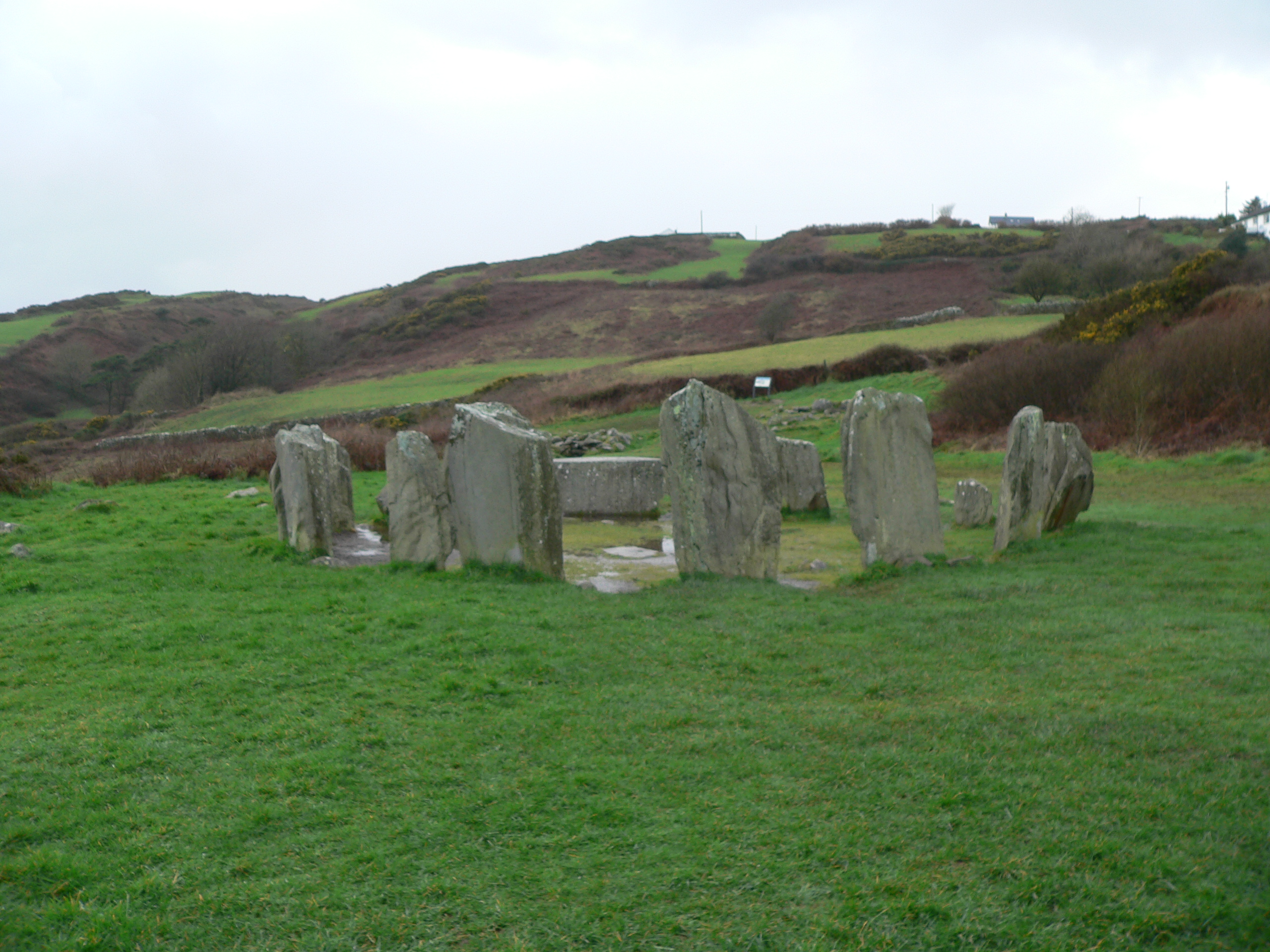
Drombeg Stone Circle – County Cork
The area in southwest Ireland – West Cork and much of Kerry – has over 100 prehistoric stone circles. What was the purpose of these circles and how were they used? One can only speculate. Reading the seasons, sacred worship, sacrificial offerings, astronomical clocks, burial grounds … these are just some of the uses the pre-Christian people of Ireland had for these stone circles. But there’s much more about the circles we still don’t know.
The circles in this region all have an odd number of stones. Drombeg has 13 – but it originally had 17. Most of the Cork / Kerry circles follow a specific astronomical orientation, having an axial stone (usually a lower, shorter stone in the circle) on the western edge opposite a set of entrance or portal stones (usually taller) on the eastern edge. The axial stone is also called the recumbent stone. In the photo above, the two portal stones are in the center of the photo and the lower, axial stone can be seen between them on the opposite side of the circle.
A Winter Solstice Light Show
You can barely see the little notch in the hills behind the circle, but the hills define a sort of “V” on the horizon. On the winter solstice (Dec 21 – the shortest day of the year), the sun dips just under the ridge of that V in the hills, but as the earth moves the sun comes into the V in near perfect alignment with the axial and entrance stones – shooting its concentrated rays directly across the center of the circle. Accounts by people who have seen this process state that it looks as if for a few moments, the circle itself is illuminated independently of the surrounding landscape.
Why would this process have been important to these ancient people?
The Ridge is Man-Made
Excavations around the site back in the 1950s showed buried human cremated bones near the center of the circle coupled with broken pottery shards and stones. There were other burial pits near the circle with the same combination. Oddly, the shards of pottery and the stones seemed to be as revered in burial as the human bones. Excavation also proved that the plateau where the circle rests (Drombeg means “small ridge”) is man made. The people who built this circle evidently leveled the land – or ridge – to affect the perfect winter solstice drama that occurred in the circle during sunset.
Prehistoric Huts Nearby
In the same complex, near the stone circle are the remains of two prehistoric huts that were probably used for cooking – what we might call a “commercial kitchen” today. One of the huts had a capacity to boil about 70 gallons of water. Hot rocks from a fire were placed into a rectangular stone basin and within 20 minutes the water would come to a boil and remain hot for about 3 hours. This was probably how the ancient people boiled their meat. Remains of what was probably an oven are in the second circular hut. This tells us that the area wasn’t just a place to read the seasons or practice sacred ritual. The circle would have been a place of community.
The Drombeg complex is located between Skibbereen and Kinsale, and is easy to access with parking relatively close to the site. My first visit to Drombeg was in February of 2007. It was a cold, dreary, rainy day. I arrived tired. It was my last site of the day. The time was 5:00 pm. As I approached the site from the car park, I was unimpressed at first. The site seemed to have no sense of place. In fact, save for the shadows from the stone circle, the site looked like another farm field with houses nearby.
But as I walked into the complex and took in the surroundings, the place became magical. This is a site worth visiting. Take some time to gather your senses about you and notice everything about the surroundings – the distant hills, the views of the sea, the sounds, the light, the stones themselves. Then when your sensitivities are peaked, enter the circle through the Portal stone entrance.
The following is from my travel journal which is mostly transcribed recordings of impressions I dictated into a digital recorder during the visit.
I take back what I said about this site being unimpressive. The stone circle is beautiful. It’s in a big clearing where the entire valley just unfolds as you approach the circle. And there are views of the sea – the Celtic Sea.
There are hills and hills of green. Expansive sky. It’s a big wide area. It’s a beautiful stone circle. The stones are thick and tall.
Walking through the entrance of the Drombeg portal stones is pretty powerful. You walk in through the center and you can feel it. There’s just something sacred about the center of the circle.. I noticed the axial stone had two notches. There is energy here. Old energy. Ancient energy.
Drombeg Stone Circle is a very thin place. It is one of the stops on the Thin Places Mystical Tour of Ireland – May 15 – 24, 2011. Full Tour Itinerary. Make your reservations today.
Athassel Priory – Golden, Co. Tipperary
A few miles southwest of Cashel in County Tipperary lies the ruins of Athassel Priory, a 13th century monastery on about 4 acres of land. The ruins are haunting when viewed from the road. It’s a very thin place.
The Lonely Planet Guide to Ireland refers to Athassal Priory as “…the atmospheric – and deliciously creepy at dusk – ruins.”
The ruins are set in a large field one must access by climbing over a wall from the roadside (at least this was true the last time I was there). It’s a massive ruin, but it’s interesting that Lonely planet called it “creepy.”
Athassel is one of the few places I have visited (and I’ve visited hundreds of monastery ruins) where I got an overwhelming sense of foreboding. Can’t say why. The place was beautiful but in this one spot I started to feel frightened, almost terrified. I turned the corner and saw this statue carved out of the ruined wall – St. Joseph and the boy Jesus… but Jesus’ head was removed. I moved away from that section and continued through the ruin. The intense fear subsided, but felt like I was being watched the whole time.
Strange. A very thin place.
The original buildings date back to 1205, and was founded by the Augustinians. Later it was occupied by the Cistercians. It’s original size alone denotes that it was a source of great wealth and a significant monastery in Ireland and it would have been surrounded by a large town – none of which remains. Still surviving within the ruin are an arched stone bridge approaching a portcullis gateway and gatehouse.
It’s easy to lose track of time at Athassel. One could wander for hours. The priory is a stop on our Thin Places Mystical Tour of Ireland scheduled for May 2011. Interested in attending? Check out the itinerary and book your spot.
What’s the Deal With Thin Places?
In a a phone interview last week, I was asked, “What’s the deal with thin places?” I was being interviewed by a journalist covering business, and the focus of the article was to be using social media to grow a business. But the interviewer had done some background research on me, read my blogs and seen that I write about, give lectures on, and gives tours of “thin places.”
So I gave the writer my standard answer, “thin places are places where the veil between this world and the eternal world is thin.” The look on his face said, “So?”
I continued, “Do you really want to get into this?” He said, “Why not?” I found myself regurgitating the same old stale sentences I’ve used in the past, perhaps because I assumed this business journalist had no genuine interest in the concept of mystical sites. However, his confused face betrayed his business focus and revealed a personal intrigue. He said, “Why would I want to go to a thin place?”
Hmmm. Why would he?
I offered an explanation, and soon found my raised voice and overt hand gestures revealing my passion for thin places. I tend to lose control.
My answer to “Why would I want to go to a thin place?”
We humans are physical, mental and spiritual. Our spiritual side, unlike the physical and mental side is not experienced through our five senses. All civilizations have left behind indications that they had a spiritual life, that they looked beyond the physical world and communicated with the eternal world.
If meat and veggies feed the body, and books and learning feed the mind, thin places feed the soul and help to expand the human spirit. A place with an inherent mystical quality or “thin veil” between worlds allows the person in that place to stretch and grow his or her spiritual sensitivities. These places help us pray better, contemplate on a deeper level, and “touch the other side”… manifesting the power of the eternal world inside ourselves.
Grace and spiritual blessings come easily in thin places. Insights emerge and amaze us. Answers to spiritual questions are heard. And the greatest of all spiritual endowments is magnified in thin places – inner peace.
Peace.
Worries are diminished, depression lifted, and priorities redefined when we expand our degree of inner peace, and our gratitude for simple things is amplified. Inner peace enlarges our sense that all nature is charged with divinity, a common theme over the centuries – evident in Psalm 148 and St. Francis of Assis’s Canticle of the Creatures.
Is there value in that?

Thin Places – Do we make them thin or are they inherently thin?
I’m a believer that thin places are inherently thin, and their mystical qualities draw humans to them. And though I believe that thin places exist all over the planet, I don’t believe we – that is humans – make these places thin by connecting with God there. Perhaps great acts of humans living, loving, suffering, or dying in a particular place impact the veil – thus the thinness in places like Gettysburg, Thoor Ballylee, Taj Mahal, or Skibbereen. But a thin place is what it is. In most cases, we don’t impact the degree of thinness. Keen, spiritual sensitivities help us identify these places.
I reject the idea that we create our own thin places. “Because I feel God’s presence strongly right now, this must be a thin place.” I believe that with a well exercised spirit we can enter into a spiritual state more readily – anywhere. That same exercised spirit will also be able to identify a place that is mystical and close to the eternal, and take advantage of the openness.
Blessings Come to Us in Thin Places
When the human spirit is tuned in at a thin place, communication with the eternal world flows back and forth readily and easily. Not just with God, but with the communion of saints – those that have gone before us. We all stand in the same time, in the same space. Our prayers joined with prayers of the saints makes our humble prayer stronger. Spiritual graces and insights flow. We find ourselves easily uncovering answers to the questions of the heart. We find encouragement for our sense of defeat, comfort for the losses we mourn.
I find the presence of love – the greatest power in the world – so prevalent in thin places that it is almost palpable. Love knows now barriers between worlds. It hovers in a thin place, unifying both the physical and the eternal. That overwhelming sense of the presence of spiritual love is worth the visit.
For me, these are worthy reasons for traveling to thin places.
Invite all you readers to come with us on the Thin Places Tour.
